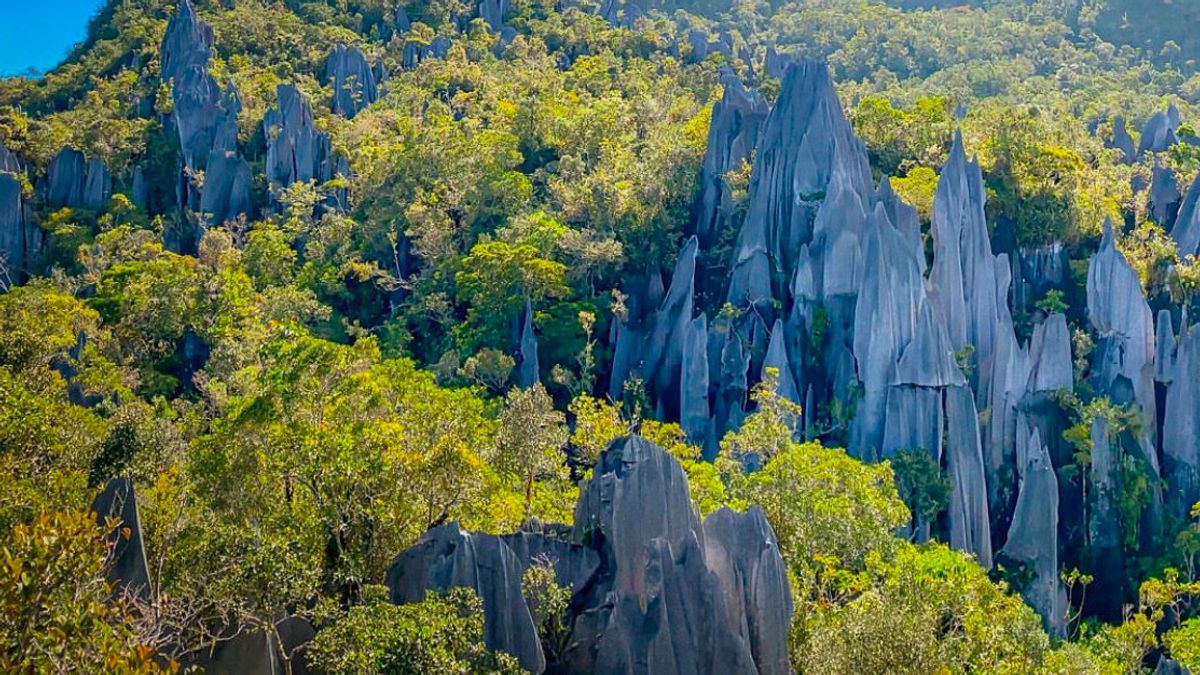JAKARTA - Southeast Asia or ASEAN has extraordinary richness of culture, history, and nature. In this region, various UNESCO World Heritage Sites are scattered that not only amaze, but also store valuable stories about human civilization.
Although some sites are well known, there are many destinations that are still rarely known but no less amazing. Here are 10 UNESCO World Heritage Sites in ASEAN that must be visited, as reported by VOI from the Trip Zilla page on Tuesday, January 7, 2025.
1. Hoi An Ancient Town, Vietnam
Hoi An is not just a city, it is a journey across time. Formerly a busy trading port, this riverside city beautifully combines the architectural influences of Vietnam, China, Japan, and Europe. Explore the illuminated road, visit colorful shop houses, and perpetuate moments on the iconic Japanese Bridge.
Not only that, you can also cycle casually to fertile rural areas to meet local craftsmen and study traditional handicrafts. Don't miss the typical food, such as cao l wayu (a typical Hoi An noodle dish) or banh mi which is no less delicious than the version in Ho Chi Minh City. Hoi An really spoils all senses.
2. Luang Prabang, Laos
If you are looking for a place where time feels slow, Luang Prabang is the answer. Located in the heart of Laos, the city combines spirituality with colonial charm. Imagine, a gold-plated Buddhist temple, a monk wrapped in a Saffron robe that collects alms in the morning, and a stunning mountain background.
Don't miss climbing Mount Phousi to enjoy the stunning view of the city. After that, relax at Kuang Si Falls with greenish blue pools surrounded by tropical forests. In addition, enjoy the growing cafe culture in this city, and make sure to try a hot Laos coffee combined with a promulgated cryosant. The combination is perfect East and West.
3. Vat Phou Temple Complex, Laos
Forget Angkor Wat for a moment. Vat Phou may be less famous, but equally captivating. This ancient Khmer temple complex reflects the cultural and spiritual heritage of the Khmer Empire. Located on the slopes facing the Mekong River, the site combines symbolic spiritual landscapes with natural beauty.
What makes Vat Phou special is its deep spiritual meaning. Built to reflect Hindu relations between nature and man, this site has monuments, intricate carvings, and holy places that are still in use today. Climbing this temple ladder is a calming and divine experience for humans.
4. Mount Mulu National Park, Malaysia
For adventurers, this is a haven. Located in Sarawak, Mount Mulu National Park is home to the most amazing natural formation in the world. Imagine giant limestone caves, ancient rainforests, and sharp peaks.
One of its main attractions is exploring large caves such as Sarawak Chamber, the world's largest cave space, and the Rusa Cave, where you can watch millions of bats come out at sunset. If you're looking for a challenge, do a dramatic and sharp climb to Puncak Mulu.
5. Puerto-Princess Subterranean River National Park, Philippines
Ever dreamed of walking along an underground river surrounded by dramatic limestone cliffs? In Puerto-Princesa Subterranean River National Park, Philippines, the dream came true. Located in Palawan, often called the Philippines' 'last border', this place is truly magical.
These river Caves are filled with amazing rock formations, ranging from stalactites to stalagmites that resemble cathedral towers. Care for boats with wide knowledge local guides, and don't forget to prepare cameras to catch monkeys and lizards roaming around.
6. Tirelih Archaeological Site, Thailand
tech tires are not just for archaeological lovers, this is an in-depth view of ancient Southeast Asia. This prehistoric site, which is over 4,000 years old, offers insight into early human innovation, especially in pottery and metallurgical.
Explore museums at the location to see beautifully preserved pottery with a complicated design. The best? This place is not too crowded, so it can explore history in peace.
7. Historic Town of Sukhothai, Thailand
The capital city of the Kingdom of Siam, Sukhothai feels like it is in the history book. This vast historic garden is a treasure of culture and architecture, a home to the ruins of palaces, temples, and Buddha statues from the 13th century.
The best way to explore the Sukhothai? On a bicycle. Visit Wat Mahathat, this garden gem, where a large Buddha statue sits in silence. The best time to visit is morning or evening to avoid heat and crowds.
8. Hu big Monuments Complex, Vietnam
Welcome to the heyday of the Vietnamese empire. Hubar Monuments Complex is a collection of palaces, pagodas, and stunning royal tombs. One of the places to visit is the Historical Fort that houses an imperial city.
After enjoying his splendor, ride a boat on the Perfume River to visit the royal tombs scattered in the area. This experience will bring you to explore the history and beauty of nature at once.
9. Rice Terraces of the Philippines Cordilleras, Philippines
Dubbed "Eightth World Miracle", Rice Terraces of the Philippine Cordilleras is proof of the genius and resilience of ancient Filipino farmers. Built more than 2,000 years ago, this often still used to grow rice to this day.
BACA JUGA:
Visit Rice Terraces of the Philippine Cordilleras not only to enjoy its stunning views, but also to meet Ifugao's indigenous peoples and learn their rich culture.
10. Singapore Botanic Gardens, Singapore
For those who cannot travel far, Singapore has the UNESCO gem in its backyard. The Botanic Gardens Singapore was the first tropical botanical park to be on the World Heritage list.
Explore the National Orchid Park, home to thousands of colorful orchids, or visit the Learning Forest to recognize Southeast Asian biodiversity. This place is the perfect escape from the hustle and bustle of city life.
The English, Chinese, Japanese, Arabic, and French versions are automatically generated by the AI. So there may still be inaccuracies in translating, please always see Indonesian as our main language. (system supported by DigitalSiber.id)
















